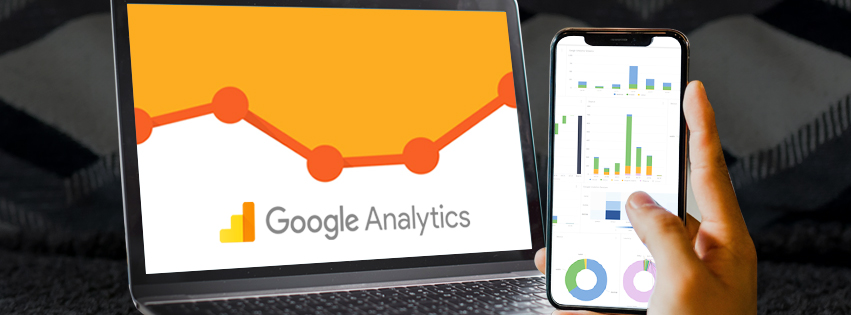Did you know that almost 70% of the top 10,000 websites are using Google Analytics (GA)? This platform is one of the most widely used to improve website performance. It’s time for you to start actively using this essential tool for your business and optimize success in the digital marketing (DM) world.
But most business owners, especially SMB’s who are stretched for time, put this tool on the back burner, or just leave it up to one of their teammates to monitor and activate. If you do not prioritize understanding the GA dashboard you will not reap the full benefits of DM, which leaves a major opportunity for understanding the ROI coming from your digital activity on the table.
Most often, the hiccup is that the plethora of data coming from different sources into GA, along with the complicated terminology, can be overwhelming and cause you to lose sight of what’s most important.
So here are the top 5 know-HOWs to track your GA dashboard on a monthly basis. These five points won’t take more than 15 minutes of your calendar. And you can still stay on top of your website data.
1. How ENGAGED is your audience:
If you’re asking yourself this question, the answer is in your GA bounce rate. It determines the length of time your audience is engaged with a page’s content. If the bounce rate is high, it’s time to seriously revise the content; if it’s steadily decreasing, you are in for a good ride.
2. How your audience INTERACTS with your website:
Along with bounce rate, user flow shows the path your audience travels through your website. It adds to the picture how your audience is making its way from one destination to the next. This data is extremely useful in identifying top landing pages as well as how much traffic is going to conversion pages.
3. How to ANALYZE user behavior:
The best way to get insights about your visitors is to review the Site Content tab under Behavior. You will get a breakdown of traffic; bounce rate and exits for the most popular pages. For e.g. if you see a lot of blogs then clearly it’s a popular destination vs. any other section of the website. You can determine trends with your audience and uncover weaknesses in your website by determining which points have the lowest traction.
4. How to RANK HIGH for SEO performance:
The search console takes site content a step further to reveal specific keywords that attract more people to your website. These high-quality words and phrases are your golden nuggets to further the ROI from your digital campaign. One simple trick is to integrate these keywords across digital platforms, populating them in social media, email marketing, website content, blogs, E-books and more.
5. How many INQUIRIES are coming from the website:
You most certainly want to know Lead Conversions from your website. To do this, you begin by setting up Goals. These are a set of simple rules that record the actions of your user. Setting up and recording your Goals correctly is your best bet for obtaining accurate performance metrics for your website. This data will help you determine what needs to be fixed in your lead generation funnel.
Over time, consumers’ behaviors and expectations change; it’s proven that adapting to these changes is the best way for businesses to survive and grow. With the GA dashboard your business will not only have the insights needed to stay afloat, but to thrive.
During this difficult time for businesses, your digital marketing platform can help you break through and move towards success. We believe in taking the right approach and we want to help you as much as possible to get back on track. If you have any questions, please don’t hesitate to reach out!

